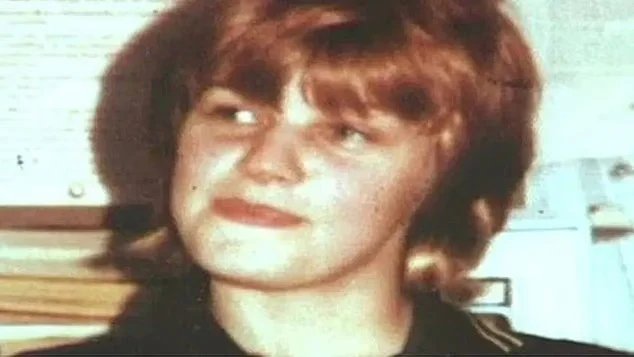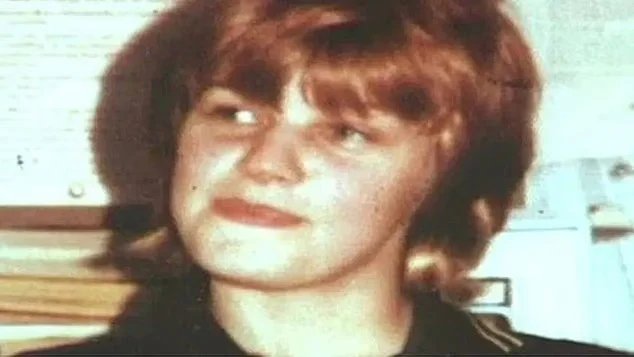
uaetodaynews.com — Inside the mystery of ‘Little Miss Nobody’ Karen Price – who was tragically found wrapped in a blanket after nobody looked for her for eight years – and the clue that finally revealed her killer
It seemed like any other morning for five Welsh builders as they set to work laying pipes in a house in Cardiff’s Fitzhamon Embankment in 1989.
But it wasn’t long before they made the grim discovery of 15-year-old Karen Price, a teenager who had been murdered, wrapped in a carpet, and buried in a shallow grave near the door to a basement flat at number 29.
With little to no way of determining the identity of the remains during a time before DNA testing, police had to rely on a combination of old-school techniques and new technology to solve Karen’s murder.
This week, a new Channel 5 documentary has told the story of how detectives found out the remains belonged to Karen, and who was behind her gruesome death.
Karen was found on December 7, 1989, eight years after she was last seen. Tragically, in this time, no one had come looking for the young teenager, who had been in care since the age of 10 and had been dubbed ‘Little Miss Nobody‘.
Appearing in the documentary, Paul Fenton, a retired detective sergeant from South Wales police, who was one of the first on the scene, recalled jumping into action when they realised her death was ‘foul play’.
After discovering the body, it was essential that police gather every possible trace of evidence to find out who it was, he said.
But it wasn’t long before they made the grim discovery of 15-year-old Karen Price, a teenager who had been murdered, wrapped in a carpet, and buried in a shallow grave near the door to a basement flat at number 29 (Karen, pictured)
No one was living in the house at the time she was found, buried at the rear of the property.
Footage shown in the documentary showed the eerie moment the builders first discovered her body, and joked light-heartedly that it could be a corpse – never expecting it to be the truth. One said: ‘Jokingly, we said oh, there might be a body in there, we’d better unwrap that.’
With just skeletal remains and the clothes left on their back, police had to begin from scratch when starting their investigations.
Karen had been bound at the wrists and had a bag placed over her head at the time she was buried.
Police were able to identify her age by studying the remains of her teeth. Professor David Whittaker, a forensic dentist, was able to determine that she was female and aged around 15 and a half when she died.
Hints of pink on her teeth also led him to determine that her death had likely been a violent one, since blunt force trauma led to the bursting of the capillaries, which then spread to the teeth.
However, police were initially stumped by the name of the young girl, as missing person reports revealed nothing.
‘We trawled the entire country. It seemed remarkable to us that we brought up absolutely nothing,’ said a detective who had worked on the case.
Police visited local dentists to see if they could identify the teeth, but they continued to struggle to identify the person associated with the teeth.
They then turned to facial reconstruction forensic artist, Richard Neave, to create an image of her face before she died.
Pictured: Alan Charlton, a local bouncer with a reputation for pimping out young local girls. He was living in the basement of the property where Karen’s body was found at the time of her murder
Idris Ali, pictured, who served three years and 10 months in prison after he was convicted of the manslaughter of Karen Price
Using a cast of her skull, he worked to recreate a model of what Karen’s face may have looked like using clay, an image that police then showed on TV, desperately hoping someone might recognise her.
Investigating insect activity also gave police an indication of the time of her death. They found blowfly larvae in the carpet, which showed she must have been killed between April and October, when the eggs are laid.
They were able to pinpoint that her death happened between 1982 and 1984. From this, they were able to trace the former residents of the flat, which gave them a list of potential killers.
After a clay reconstruction of Karen was made public alongside a timeline for when she likely went missing, police received phone calls from two social workers, both of whom gave the name Karen Price.
From there, detectives learned of Karen’s ‘sad’ background. After her parents divorced when she was just ten years old, they had custody issues that eventually landed the youngster living in a care home.
But soon after she was sent into care, she began to abscond from the home, eventually running away and not coming back.
Uncovering details about her past, detectives then discovered she had started mixing ‘with undesirable people’ in Cardiff city centre.
Another detective who had worked on the case said: ‘Life was difficult for runaways like Karen because of all the temptations and because of all the undesirables in which they lived and operated in that area’.
Eventually, forensic dentist, David, tracked down a surgery in north Cardiff that possessed her dental records. This confirmed the identity of Karen.
Later, police appealed to Crimewatch callers to come forward with any information they might have about Karen’s disappearance.
One caller, Idris Ali rang to say that he was once a friend of Karen’s. Idris, who was also 15 or 16 at the time, had met her at a bus station and introduced her to Alan Charlton, a local bouncer with a reputation for pimping out young local girls.
They later discovered that Alan had been living in the basement flat at the time of the murder.
After interviewing Idris, they then learned that Idris had brought Karen to the flat to attend Alan’s party, along with another young girl, who became known as witness D.
Karen and the other girl, who was just 13, were both asked to strip naked and get into bed so Alan could photograph them. When witness D refused, he struck her. Karen then attempted to intervene but was throttled, receiving a fatal blow to the head.
Alan and Idris were later jailed in 1991 for Karen’s murder, both later attempting to appeal their sentences. At the time they were accused of the murders, both pleaded not guilty.
Alan received a life sentence for the murder, while Idris was freed after just three years and 10 months in prison, his conviction quashed after he admitted manslaughter.
In 2016, judges dismissed appeals from Alan, who remains in prison to this day – despite never having admitted to the murder.
Lawyers argued that witness D, who provided key evidence for the trial, could not be relied upon; however, their appeal failed.
Reflecting on how police were able to identify Karen’s identity and eventually jail her murderers, detective Paul Fenton said, ‘Right from the word go, all we had were skeletal remains; we didn’t have social media. We didn’t have all the things that you have now, like CCTV. We had nothing other than basic good police work.’
Tobias Houlton, facial identification specialist at the University of Dundee, said Price’s case was essential in ‘helping to legitimise the use of social reconstruction’.
Buried Secrets: The Body in the Carpet will be on Channel 5 at 10pm on Tuesday.
Disclaimer: This news article has been republished exactly as it appeared on its original source, without any modification.
We do not take any responsibility for its content, which remains solely the responsibility of the original publisher.
Disclaimer: This news article has been republished exactly as it appeared on its original source, without any modification.
We do not take any responsibility for its content, which remains solely the responsibility of the original publisher.
Author: uaetodaynews
Published on: 2025-10-16 05:58:00
Source: uaetodaynews.com
